Lately, I’ve been contemplating ways that I can help you and your students teach and learn the complex art of writing persuasive texts. In particular, I’ve been thinking about persuasive writing scaffolds and how they can be a huge support in nailing text structure.
Whether you like it or dislike it, for many Australian Primary Schools, NAPLAN is approaching. While I strongly advocate making NAPLAN incidental to your amazing teaching practice, I also believe that it’s important to give our students the tools and support that they need to experience success for themselves.
In this blog, I’m going to share with you my perspective on using writing scaffolds and reveal a few quick and effective persuasive writing scaffolds that your students can draw themselves anytime and anywhere.
Persuasive Writing Scaffolds – The Pros and Cons

Before we go any further, it’s important to note that there here are a few pros and cons to using writing scaffolds. There is no doubt that beginning writers can benefit from being taught how to use structured scaffolds. Using writing scaffolds can help your students to:
- get started!
- get focused on a writing task
- feel increased levels of self-confidence
- make the transition from guided writing to independent writing
- generate ideas
- organise their ideas
- keep track of their ideas.
On the other hand, writing scaffolds can limit creativity and encourage a formulaic approach to writing. Students can become overly dependent on a particular scaffold and struggle to create a persuasive text without it.
Take a Balanced Approach

So, how can we use writing scaffolds without making students feel like they always have to do formulaic writing?
For me, the secret is to use simple writing scaffolds as a base on which students can build more complex and creative structures once they master the simpler format. I love to use the analogy of a building supported with scaffolding…
Once the building can stand on its own, the scaffolding is removed.
Similarly, the prompts and supports in a persuasive writing scaffold are taken away once a student is capable of working independently.
The Importance of Planning Writing

Planning is a critical part of creating a coherent, controlled and complete persuasive text. With this in mind, it’s critical that we teach our students how to do it. Amongst other things, planning writing helps students to:
- put pen to paper and get started
- feel more confident
- organise their ideas
- stay on track and avoid tangents.
Huge student progress in writing can be made by spending a significant amount of time teaching the process of planning in isolation. By this, I mean creating just plans, more plans and more plans without creating a finished text. Teaching planning works well if your include modelled, shared, guided and independent writing experiences. You can maximise learning by incorporating planning activities into literacy groups, homework tasks and fast finisher activities.
How Much Time Should Students Spend on Planning?

If time was an infinite resource, then perhaps there could never be too much time allocated to planning. But the reality is that in the time frame of a lesson or an assessment task, planning needs to be easy, quick and effective. During NAPLAN, students are encouraged to spend just five minutes of planning and are given only a blank sheet of paper. This got me thinking…
What if there was an easy and effective persuasive writing scaffold that your students could draw themselves anywhere, any time and quickly?
And so…the Stick Person Persuasive Writing Scaffold was created…
Stick Person Persuasive Writing Scaffold
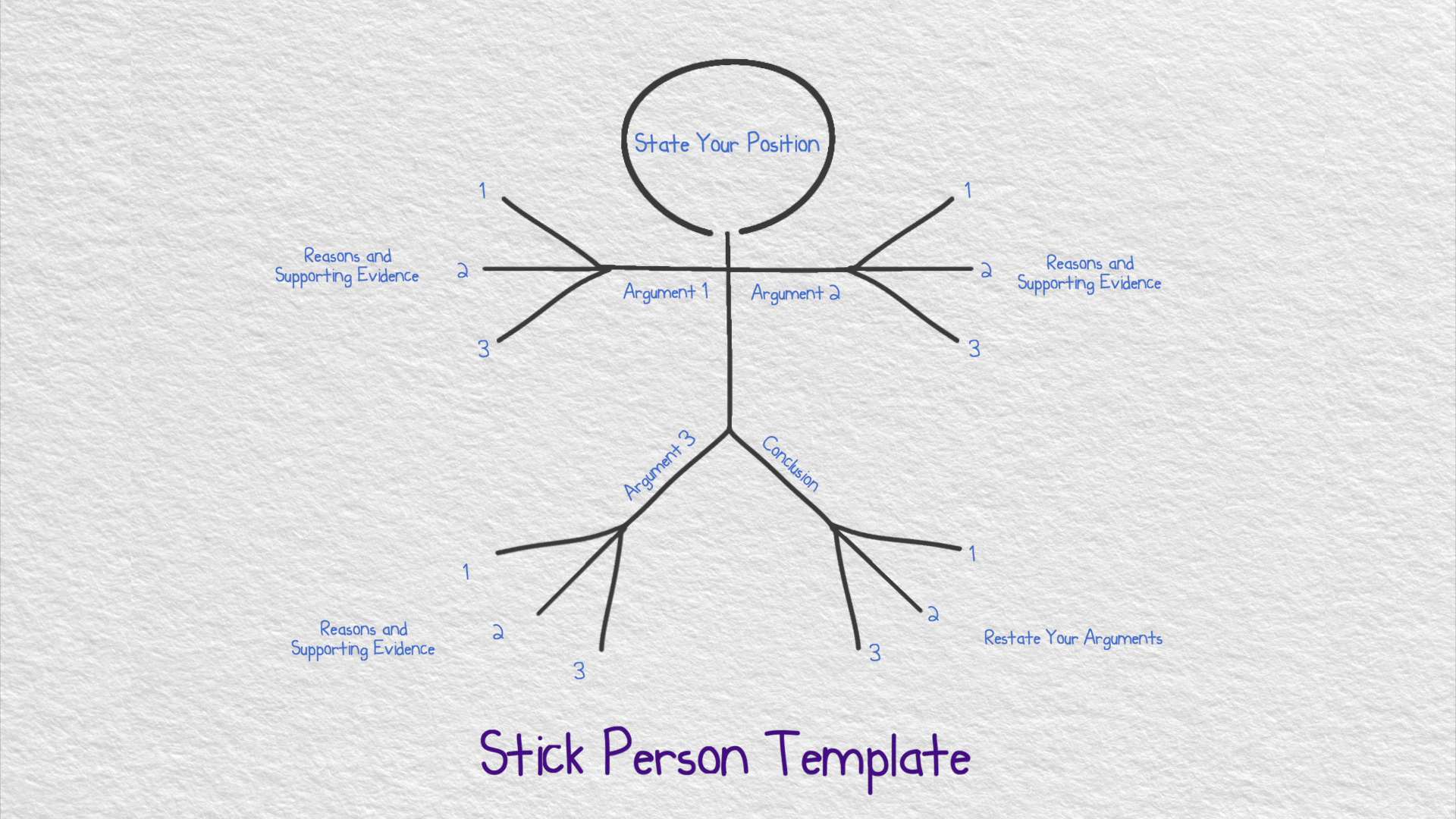
The Stick Person Persuasive Writing Scaffold is a tried and tested planning tool for persuasive writing. I used in my own classroom and it works! It can be used effectively to help your students plan a coherent, controlled and complete argument that includes:
- an introduction with a clear position statement
- a body with reasons and detailed supporting evidence
- a conclusion that reinforces the writer’s position.
The brilliance of this planning tool comes down to the fact that the majority of students have been drawing stick people for as long as they can remember! When your students have become familiar with the unusual number of fingers and toes this stick person has, they will be able to draw their own persuasive writing scaffold anywhere at any time.
Stick Person Graphic Organiser Template
We have created a FREE Stick Person Graphic Organiser to use as a template and get your students started. This template might come in handy to:
- introduce the concept on your interactive whiteboard
- help your students in the early stages
- stick into the front of writing book
- include as part of a homework activity
- share with parents and guardians.
Don’t forget that the ultimate aim is that your students will be able to draw their own stick person independently on a blank sheet of paper.
With sufficient practice, your students will be able to whip up a stick person persuasive writing scaffold in 30 seconds!
How to Use the Stick Person Scaffold
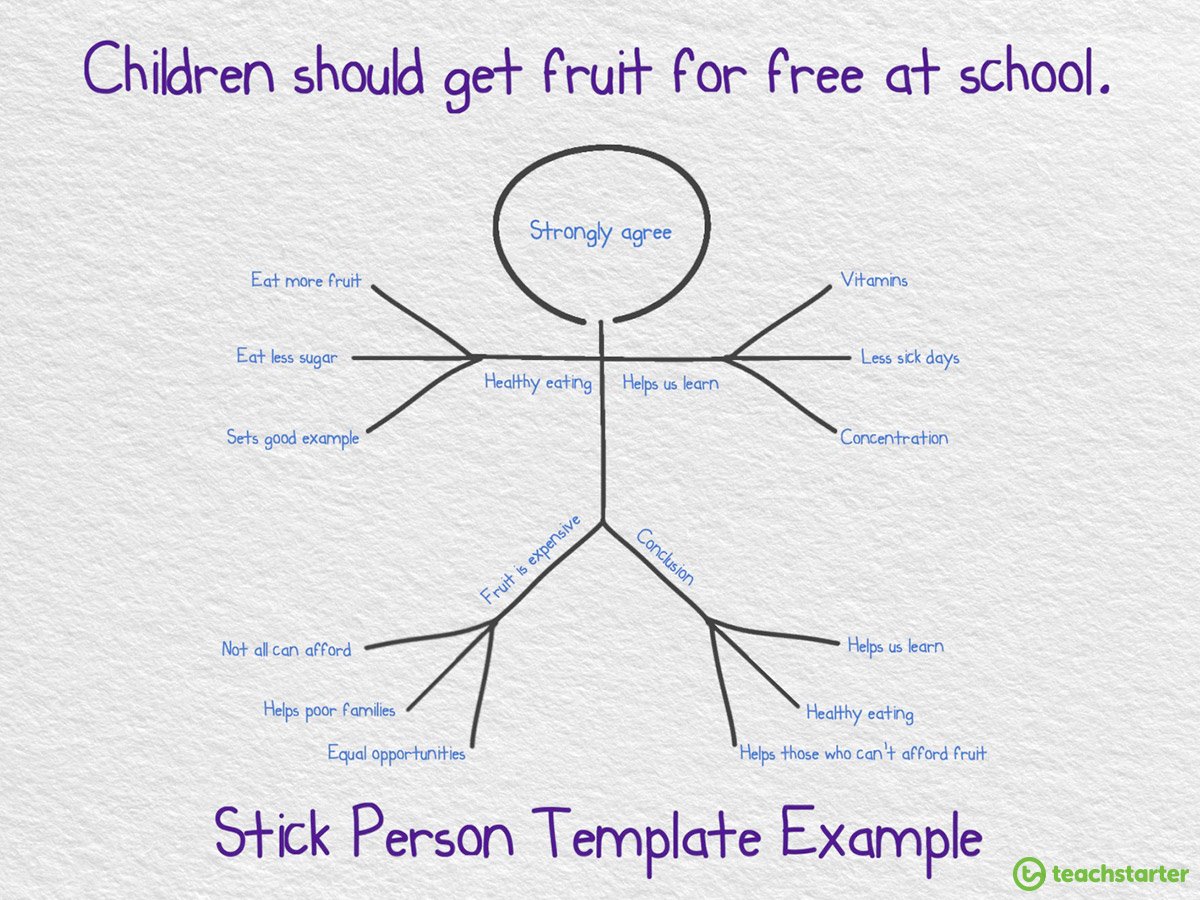
Teach your students how to use the Stick Person Graphic Organiser as a persuasive writing scaffold through a combination of modelled, shared, guided and independent writing sessions.
- Model how to draw a stick person quickly and easily.
- Add subheadings to show how to use the head, arms and legs to record ideas.
- Read aloud and discuss a persuasive writing stimulus.
- Model how to write keywords and phrases on the head, arms and legs to create a solid plan.
- Gradually scale down your role by moving from guided writing to independent writing.
Don’t forget to give your students the opportunity to practise drawing the stick person with an extraordinary number of fingers and toes over and over again until they can draw it with their eyes shut (not literally).
The Burger Persuasive Writing Scaffold
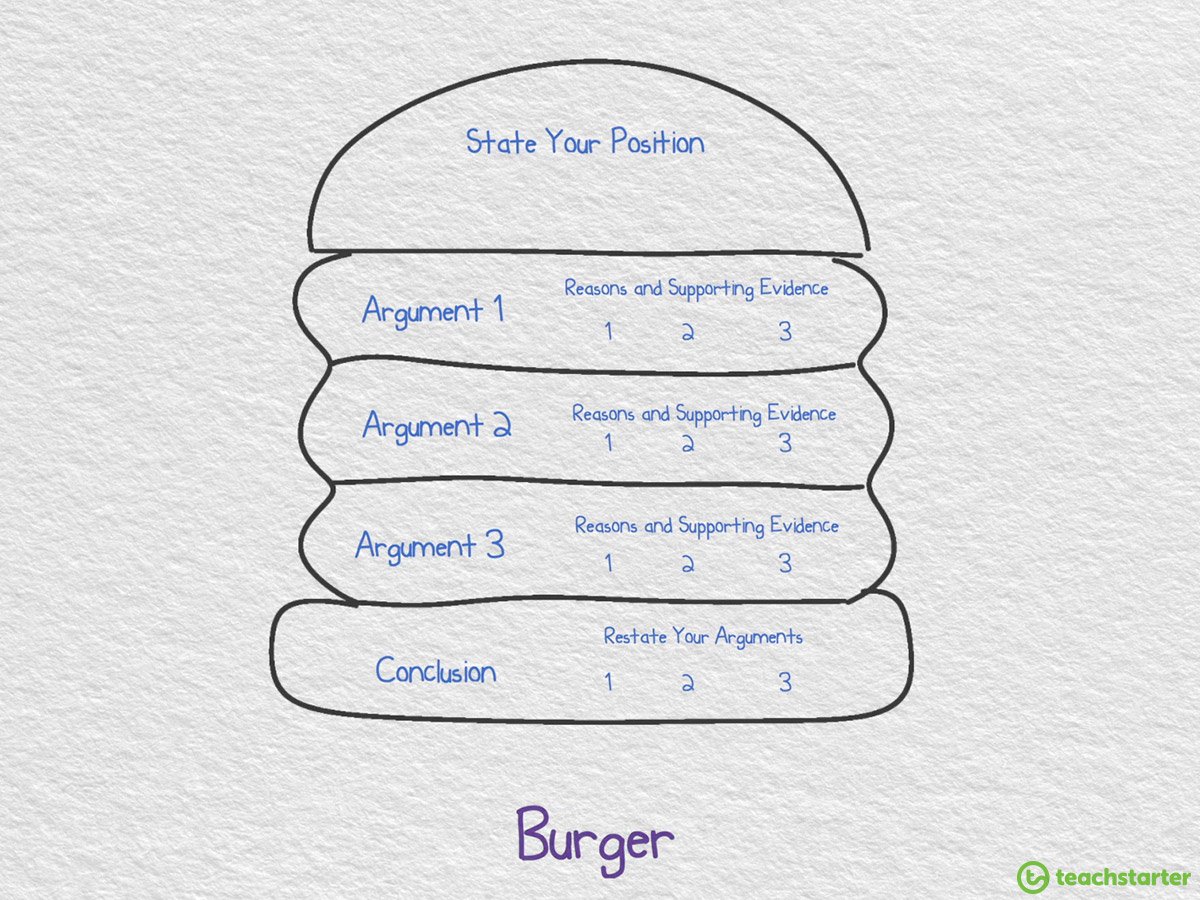
If you are not sold on the stick person idea, the burger scaffold is an alternative that works in the same way. The burger graphic organiser is nothing new, but it’s worth tweaking it a little for the purposes of a persuasive writing scaffold. It works well because it is based on the five-paragraph structure and helps students to organise their ideas in a linear way.
While we are on the subject of burgers, don’t miss our Free Download: Persuasive Paragraph – OREO Planning Template to teach and learn how to write a persuasive paragraph.
[resource:218541][resource:206457][resource:801770][resource:14888]
The Grid Persuasive Writing Scaffold
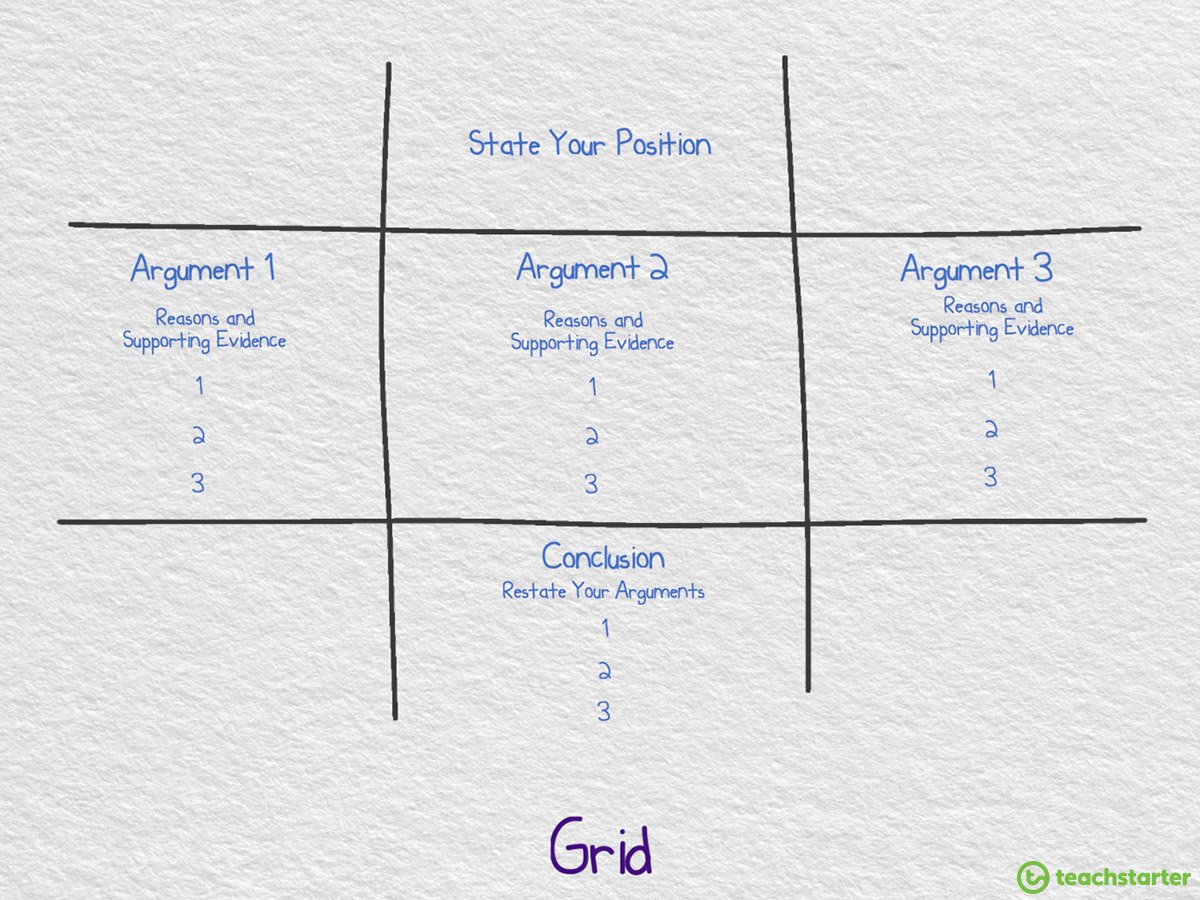
The Grid Persuasive Writing Scaffold is as simple as it gets. It’s super quick and perfect for less confident students who feel more comfortable keeping things simple and organising their ideas into boxes.
Plan, Plan and Plan Some More
When you have found a persuasive writing scaffold that suits the needs and learning style of your class, it’s time to do as much planning practice as you can.
Check out our 5 Persuasive Writing Stimulus Sheets for writing stimulus ideas. Immerse your students in persuasive language by making the most of our Persuasive Writing Teaching Resources. We have everything from Persuasive Sentence Starters to FREE Persuasive Writing Checklists.
[resource:24691][resource:24684][resource:221923][resource:189658]
For more brilliant ideas for teaching persuasive writing read Holly’s blog The Must-Have Persuasive Teaching Resource | Persuasive Writing Examples for Kids.
I’d love you to share your ideas. Connect with me anytime on Instagram #teachstarter and share your thoughts, feedback and ideas.


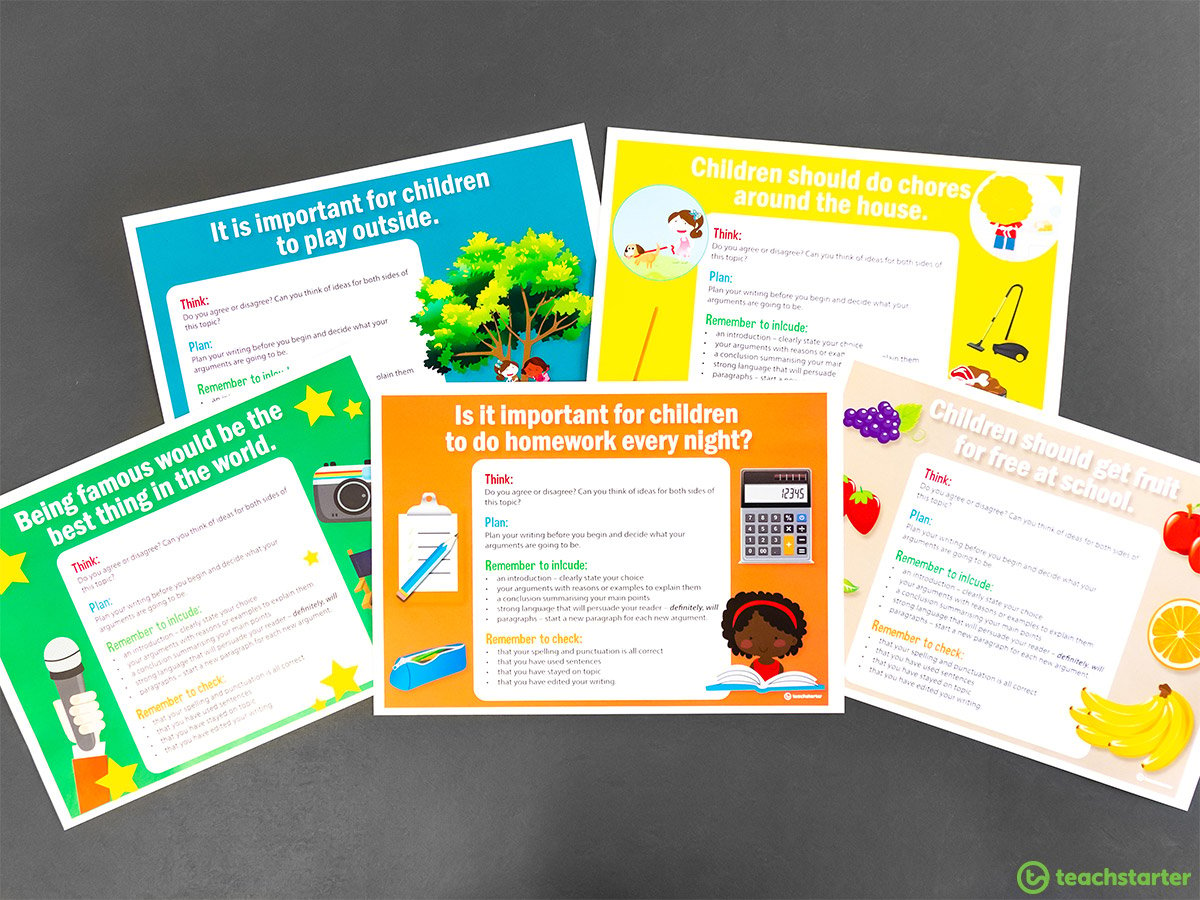






Comments